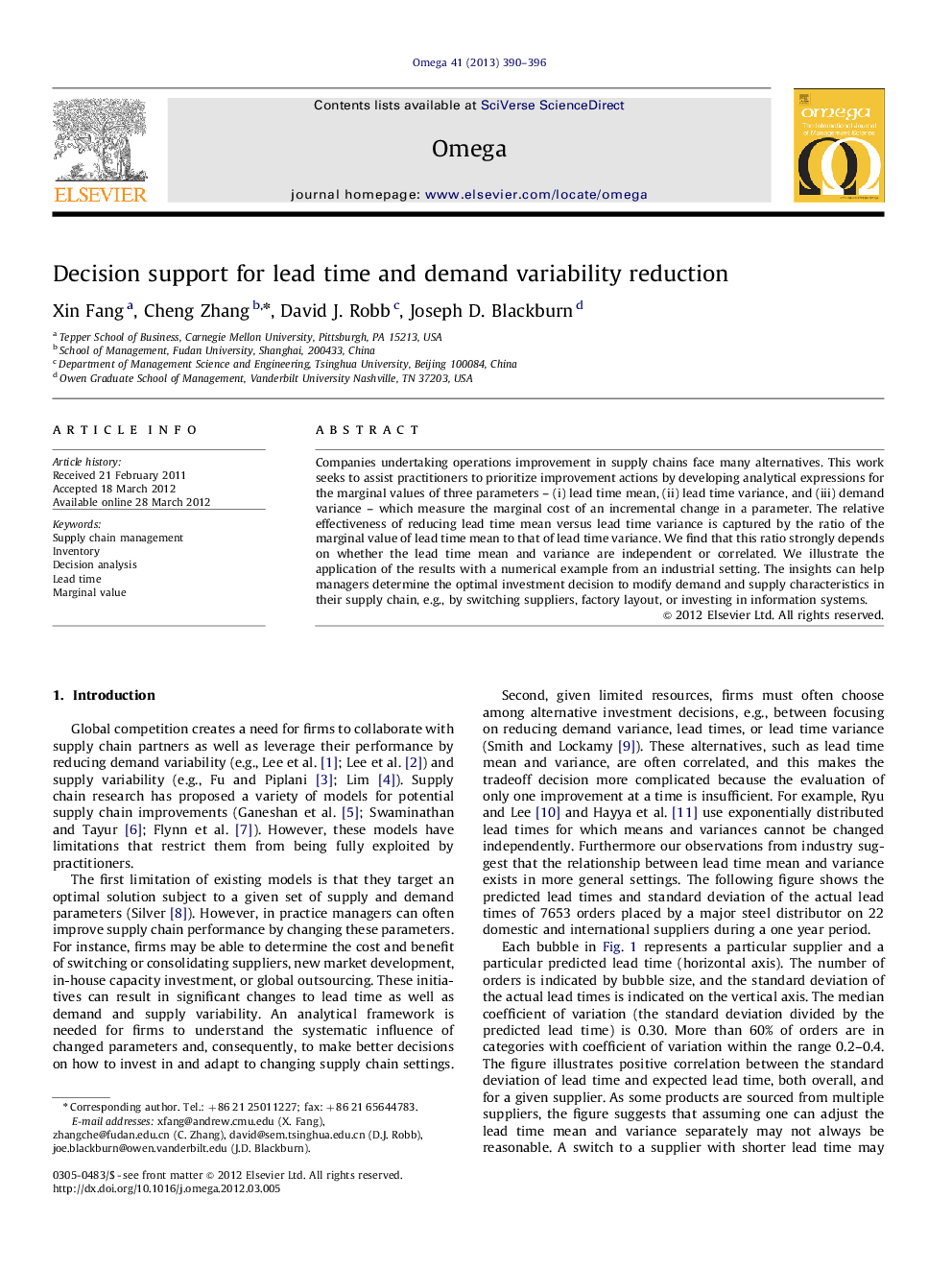| Article ID | Journal | Published Year | Pages | File Type |
|---|---|---|---|---|
| 1032670 | Omega | 2013 | 7 Pages |
Companies undertaking operations improvement in supply chains face many alternatives. This work seeks to assist practitioners to prioritize improvement actions by developing analytical expressions for the marginal values of three parameters – (i) lead time mean, (ii) lead time variance, and (iii) demand variance – which measure the marginal cost of an incremental change in a parameter. The relative effectiveness of reducing lead time mean versus lead time variance is captured by the ratio of the marginal value of lead time mean to that of lead time variance. We find that this ratio strongly depends on whether the lead time mean and variance are independent or correlated. We illustrate the application of the results with a numerical example from an industrial setting. The insights can help managers determine the optimal investment decision to modify demand and supply characteristics in their supply chain, e.g., by switching suppliers, factory layout, or investing in information systems.
► This work develops expressions for the marginal values of three parameters. ► We find that the ratio between the marginal values depends on whether they are correlated. ► The marginal values in non-optimal systems are greater than those in optimal systems. ► We illustrate the application of the results with a numerical example from an industrial setting.
